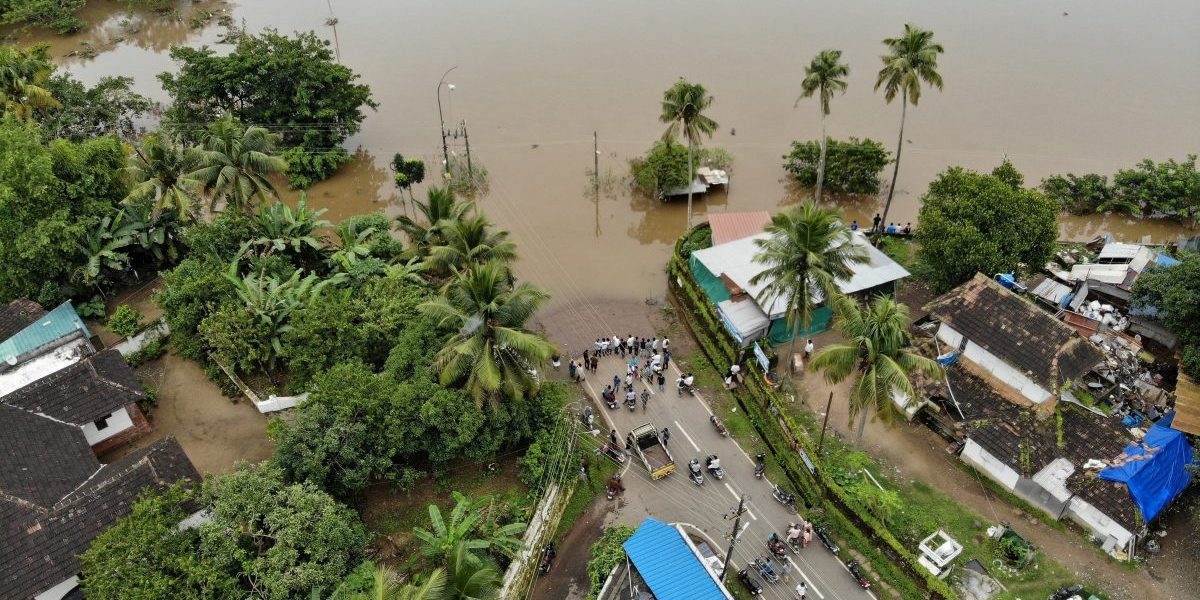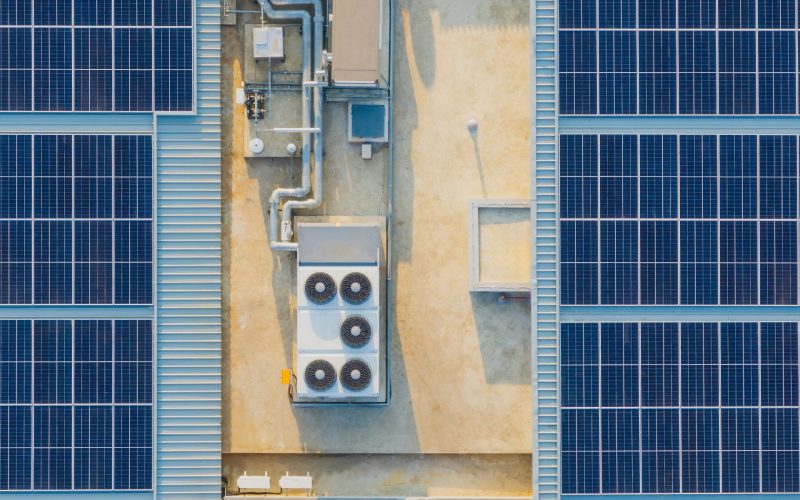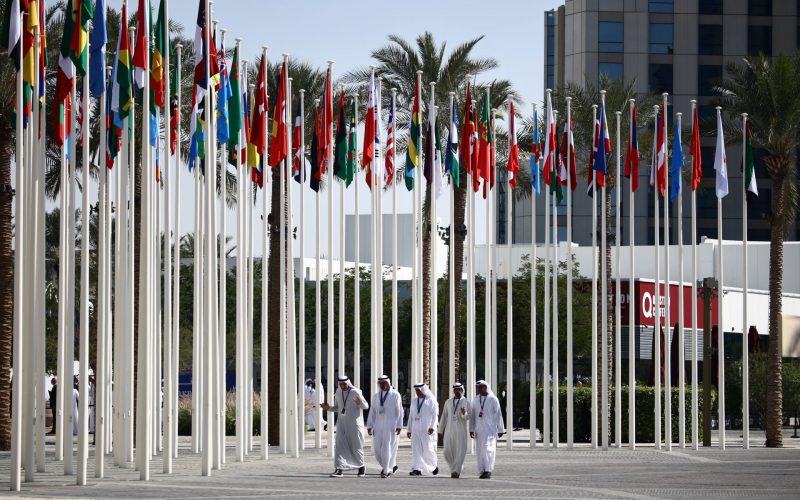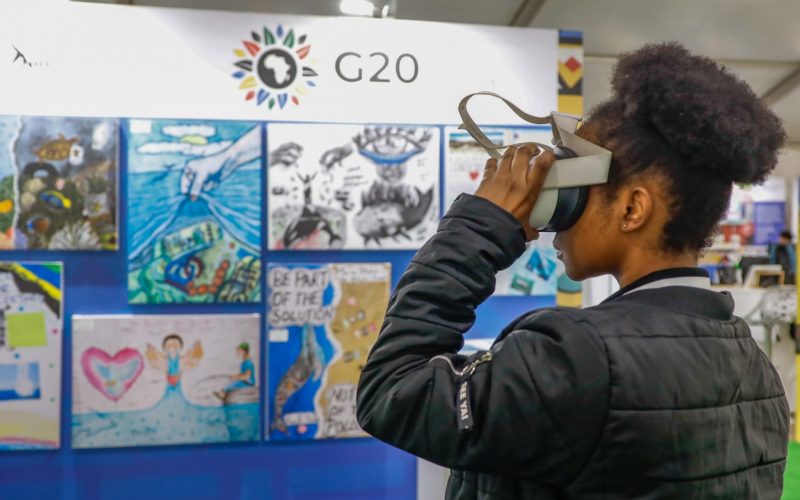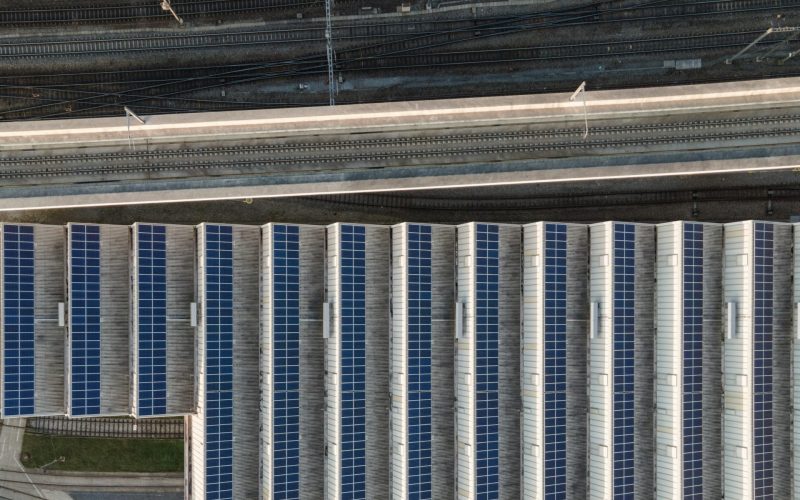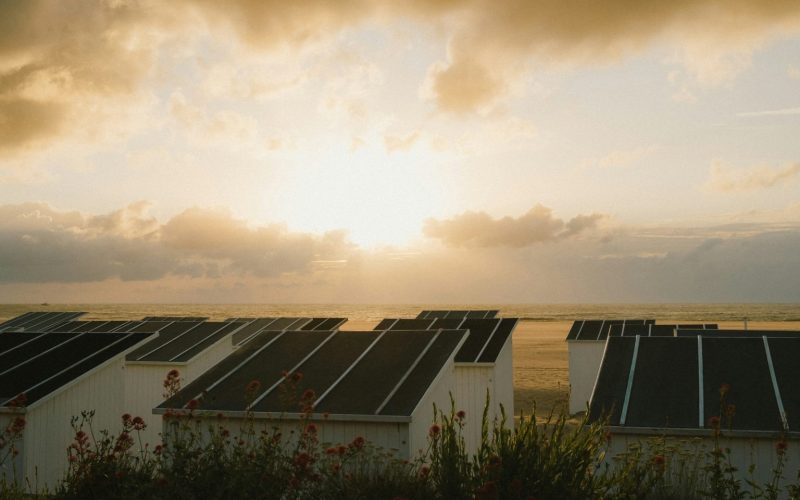Recommendations
- Loss and damage (L&D) is a matter of climate justice – financial support to address L&D is justified based on the premise that the most vulnerable communities should receive compensation for irreversible climate impacts.
- The Global South should remain united and negotiate with one voice through the Group of 77 (G77) and China in the process of establishing a New Collective Quantified Goal on Climate Finance. This includes negotiating for a quantum of financing that matches the needs of developing countries, as well as integrating separate sub-goals for adaptation and L&D.
- The decision on a New Collective Quantified Goal on Climate Finance should provide a roadmap that helps developing countries and affected communities access funds from the UN Framework Convention on Climate Change (UNFCCC) Financial Mechanism. It should be ensured that such adaptation and L&D finance takes the form of grants and not loans.
- Decisions at COP29 should maintain the eligibility criteria and donor base adopted for the Loss and Damage Fund and associated funding arrangements, in line with the UNFCCC and the Paris Agreement.
- COP29 should take substantive steps to achieve the full operation of the Loss and Damage Fund and associated funding arrangements, agreeing on short-, medium- and long-term strategies. These strategies should aim to achieve predictable and adequate resources, secure equitable distribution between regions and direct access for communities and ensure the effective functioning of the autonomous board.
- The Santiago Network on Loss and Damage should finalise and adopt guidelines and procedures that enable access to technical assistance for all developing countries as soon as possible, recognising the tensions over access to finance in the Global South and acting to resolve them.
- A proper relationship must be built between the first Biennial Transparency Reports (BTRs) under the Enhanced Transparency Framework and the next round of Nationally Determined Contributions (NDCs), so that a first cycle of ambition can be closed and a new one opened in line with the latest climate science.
- Non-governmental think tanks and academic institutions from the Global South have a key role to play in supporting developing countries in L&D negotiations. They can also provide technical assistance to countries seeking to access the Loss and Damage Fund and the Santiago Network on Loss and Damage, as well as develop data and information for national reports such as BTRs and NDCs.
- Brazil has a key role to play as a member of the Group of 20 (G20) and UNFCCC leadership troikas. Brazil represents a nexus of political, economic, financial and environmental relevance for the Global South that ought to be leveraged in climate negotiations, including on L&D.
Executive Summary
As climate change impacts accelerate, the scale of climate-related L&D will increase. The Global South has struggled to develop mechanisms under the UNFCCC to address the residual and unavoidable L&D that cannot be approached solely through adaptation or risk reduction. While relevant mechanisms have been created, such as the Warsaw International Mechanism for Loss and Damage, there is ongoing contestation around the compensation that developing countries, in particular the most vulnerable ones, should receive as a result of increasing L&D. Several policy processes present opportunities to advance financing and institutional mechanisms for addressing L&D, including the upcoming UNFCCC Conference of the Parties (COP29), Brazil’s G20 presidency in 2024 and COP30 in Brazil in 2025. Some progress has been made in advancing the L&D agenda – from initial denial and marginalisation, to accepting L&D as a third pillar of climate action alongside mitigation and adaptation and taking concrete steps towards L&D financing. However, the scale of action and the pace of progress do not match the urgency of the matter, especially in terms of financing for L&D.
Introduction
The adverse impacts of climate change are continuing to intensify and in some cases are irreversible, leading to increasing climate-related L&D. It is estimated that, between 2000 and 2019, the cost of L&D resulting from climate impacts was at least $2.8 trillion.1Rebecca Newman and Ilan Noy, ‘The global costs of extreme weather that are attributable to climate change,’Nature Communications14, no. 6103 (2023)
The Global South has struggled to develop mechanisms under the UNFCCC to address residual and unavoidable L&D that cannot be approached solely through adaptation or risk reduction. While relevant mechanisms have been created, such as the Warsaw International Mechanism for Loss and Damage, there is ongoing contestation around the compensation that developing countries, and in particular the most vulnerable ones, should receive as a result of increasing L&D. Thus, the debate on L&D is closely tied to questions of climate justice.
COP28, which was hosted by the United Arab Emirates (UAE) in Dubai in December 2023, was a milestone in the multilateral climate architecture. It finalised the first global stocktake (GST), a mechanism established under the Paris Agreement that seeks to assess progress on collective climate goals. The inclusion of L&D in the GST Decision was one of the key achievements of COP28. Other significant milestones include the decision on hosting the secretariat for the Santiago Network on Loss and Damage, which was created to provide technical assistance to developing countries on L&D. Another was the adoption of a decision operationalising the new Loss and Damage Fund and associated funding arrangements.
This policy briefing is set against the background of an alarming escalation in various international conflicts, exacerbating an already fragile situation resulting from unprecedented climate crisis, particularly affecting the most vulnerable communities. These conflicts, in addition to their social and economic costs, also worsen environmental issues by increasing emissions and accelerating land degradation and land-use change.2Asit K Biswas, ‘Scientific assessment of the long-term environmental consequences of war’ The Environmental Consequences of War: Legal, Economic, and Scientific Perspectives, (2000): 303-315; Kaitlyn M Gaynor, JJ Kathryn, Gillian H Fiorella, David J Gregory et al, ‘War and Wildlife: linking armed conflict to conservation’ Frontiers in Ecology and the Environment 14, (2016): 533-542. At the same time, conflicts also affect international food and energy prices. All of this has a negative impact on climate ambition and adherence to climate commitments, including the provision of finance from developed to developing countries. The result has been growing adaptation and L&D financing gaps.3UNEP, Adaptation Gap Report 2022: Too Little, Too Slow – Climate adaptation failure puts world at risk. (Nairobi: UNEP, 2022); UNEP, Adaptation Gap Report 2023: Underfinanced. Underprepared. Inadequate investment and planning on climate adaptation leaves world exposed (Nairobi: UNEP, 2023)
Recognition of the importance of L&D, and the need for support in this regard, has united the Global South within international climate negotiations under the UNFCCC. This includes both parties to the UNFCCC and non-governmental think tanks and academia. There is a strong conviction in the Global South that L&D funding must accommodate the growing needs of developing countries as an expression of climate justice.
In this context, this policy briefing seeks to answer two questions: To what extent do the COP28 outcomes on L&D favour the prioritisation of climate justice and equitable climate action in international climate governance? And, what are the resultant challenges and opportunities for future international climate negotiations, specifically COP29 and COP30?
The first part of the briefing reviews the achievements at COP28 in terms of L&D. Its second part assesses the challenges and opportunities offered by COP29 in 2024, hosted by Azerbaijan, and the potential connections between the G20 presidency in 2024, held by Brazil, and COP30, which will be hosted by Brazil in 2025.
L&D in the UNFCCC context: The state of play
L&D in the GST
The GST is a process established under the Paris Agreement that aims to assess collective progress on the long-term goals of the Agreement every five years. This includes progress on mitigation, adaptation, finance, technology and capacity building. This process consists of three stages: the collection of information, its analysis and the collective assessment and adoption of recommendations. It should be developed with an eye to equity and the best available science, and be both comprehensive and facilitative. Although L&D is not mentioned in the Paris Agreement in terms of the scope of the GST,4Article 14.1 of the Paris Agreement states: ‘Conference of the Parties serving as the meeting of the Parties to this Agreement shall periodically take stock of the implementation of this Agreement to assess the collective progress towards achieving the purpose of this Agreement and its long-term goals (referred to as the “global stocktake”). It shall do so in a comprehensive and facilitative manner, considering mitigation, adaptation and the means of implementation and support, and in the light of equity and the best available science.’ subsequent negotiations have led to its inclusion.
A noteworthy achievement of the GST outcome document at COP28 was the inclusion of separate sections on adaptation and L&D. These are traditionally discussed together by countries from the Global North and the Global South. The technical and political distinction between these topics should have been settled with the inclusion of two separate articles dealing with adaptation and L&D in the Paris Agreement.5Although adaptation is cross-cutting in all the provisions of the Paris Agreement, it is Article 7 that directly alludes to this issue, as Article 8 focuses on L&D However, during the implementation stage the question of whether they should be addressed separately has come up again and again. An example of how approaching these issues together is detrimental to climate ambition and the fulfilment of the long-term goals of the Paris Agreement is that there are no clear rules for reporting adaptation finance and L&D finance contributions made by developed countries. This means that developed countries that have made pledges to the Loss and Damage Fund could also report such finance as support for adaptation, leading to double counting. The GST Decision sets a precedent in this regard by urging developed countries to provide support for L&D activities specifically.
The distinction between adaptation and L&D also has an impact on negotiations on climate vulnerability. In recent years, different indices have been developed by international organisations that seek to classify countries according to their level of climate vulnerability.6The ND-GAIN of the Notre Dame University is an example of vulnerability index. There are other types of indices, such as the German Watch Global Climate Risk Index measuring the impacts of weather-related events and climatological events both in terms of direct economic losses and fatalities. The Index for Risk Management (INFORM) provides a dataset to assess crisis and disasters, the probability of their occurrence and their likely impact
These rankings have been controversial, as they go beyond the criteria agreed to in the UNFCCC according to which climate finance should be allocated. The UNFCCC recognises vulnerabilities associated with low-lying and small island countries, low-lying coasts, arid and semi-arid areas, other areas liable to floods, drought and desertification, as well as mountainous ecosystems.7Article 4.8 of the Convention states: ‘In the implementation of the commitments in this Article, the Parties shall give full consideration to what actions are necessary under the Convention, including actions related to funding, insurance and the transfer of technology, to meet the specific needs and concerns of developing country Parties arising from the adverse effects of climate change and/or the impact of the implementation of response measures, especially on: (a) Small island countries; (b) Countries with low-lying coastal areas; (c) Countries with arid and semi-arid areas, forested areas and areas liable to forest decay; – 9 – (d) Countries with areas prone to natural disasters; (e) Countries with areas liable to drought and desertification; (f) Countries with areas of high urban atmospheric pollution; (g) Countries with areas with fragile ecosystems, including mountainous ecosystems; (h) Countries whose economies are highly dependent on income generated from the production, processing and export, and/or on consumption of fossil fuels and associated energy-intensive products; and (i) Landlocked and transit countries.’ However, these features are not related to a particular negotiation bloc in the context of the UNFCCC. The Paris Agreement recognises special circumstances for least developed countries (LDCs) and small island developing states in submitting NDCs, but provisions dealing with adaptation and L&D do not distinguish between groups of countries. This is the result of agreements reached within the G77 and China. It is important that the Global South avoid reopening issues previously agreed upon within the G77 and China bloc, so as not to divert the negotiations from the most pressing priority, namely increased L&D funding from developed countries.
The GST Decision recognises international and national progress in establishing mechanisms and processes to address L&D. These include:
- the Executive Committee of the Warsaw International Mechanism and its expert groups, technical expert group and task force;
- the Santiago Network for averting, minimising and addressing L&D associated with the adverse effects of climate change;
- collective efforts to enhance understanding, action and support with respect to L&D associated with climate change impacts; and
- national efforts to respond to L&D and mechanisms for channelling funding, including at the local level.
While the institutionalisation of L&D has been slow, over the past decade notable progress has been achieved. A decade ago, L&D was sidelined in multilateral climate negotiations, whereas in recent years various institutional support arrangements for L&D have been established, including the dedicated Loss and Damage Fund.
There has been a call for developing greater synergy and coherence within the L&D, humanitarian-assistance and disaster risk-reduction spaces. One of the major tensions between donors and countries of the Global South in the discussions on L&D finance, in addition to the liability and compensation debate, has been the distinction in terms of humanitarian assistance. Developing countries have demanded that official development assistance and other humanitarian funding not be considered part of climate finance.8Aid finance used in developing countries for non-climate activities fell by about $9 billion between 2013 and 2018, indicating that climate finance is not additional but displacing finance for other objectives such as ODA. Euan Ritchie & Charles Kenny, ‘If We’re Going to Fund Climate Mitigation from ODA, We Need to Double It’ , Blogspot Center for Global Development, March 18, 2021. This issue is one of several caused by the lack of consensus on a definition of climate finance in the UNFCCC.9Luis Fernando Rosales Lozada, “Understanding the Main Elements for an Operational Definition of Climate Finance” (Policy Brief 27,South Centre Climate , Geneva, 2022)
The GST Decision invites countries to include information on L&D in their BTRs, a reporting mechanism under the UNFCCC Enhanced Transparency Framework. L&D has been treated as a section in the chapter on adaptation (Chapter 4) in the Modalities, Procedures and Guidelines for the BTRs in the context of the Enhanced Transparency Framework. However, developing countries may choose to present these components separately to make them more visible. The GST Decision also requests that the Executive Committee of the Warsaw International Mechanism prepare voluntary guidelines for enhancing the collection and management of data and information to inform the preparation of the BTRs. In addition, the Secretariat is requested to prepare a synthesis report on a regular basis.10The Paris Agreement includes the establishment of an Enhanced Transparency Framework for action and support ‘in order to build mutual trust and confidence and to promote effective implementation’ (Article 13.1). The Biennial Transparency Reports (BTRs) are the main instrument to track progress towards the Nationally Determined Contributions (NDCs). The first BTRs are due by December 2024 to inform the next round of NDCs in 2025. The Modalities, Procedures and Guidelines of the Enhanced Transparency Framework established that adaptation and loss and damage are in the same chapter. This does not arise from a scientific consensus but from the usual political trade-off whereby developed countries accept that L&D should appear but not as a third pillar of climate action
While the GST Decision has made some positive contributions to L&D, the assessment of progress in all elements of the architecture is not robust enough to make the next round of NDCs (due to be submitted to the UNFCCC in 2025) a turning point in multilateral climate ambition.
The Santiago Network on Loss and Damage
The Santiago Network on Loss and Damage, established at COP25 in 2019, was the first mechanism to provide support to developing countries on L&D associated with climate change.11The Santiago Network on Loss and Damage aims to catalyse technical assistance of relevant organisations, bodies, networks and experts, for the implementation of relevant approaches for averting, minimise and addressing loss and damage at the local, national and regional level, in developing countries that are particularly vulnerable to the adverse effects of climate change (Decision 2/CMA.2). Its main functions are to catalyse demand-driven technical assistance, to facilitate collaboration, coordination, coherence and synergies, as well as facilitating the development and dissemination of knowledge and information (Decision 19/CMA.3); UNEP, Adaptation Gap Report 2022: Too Little, Too Slow
In 2022, at COP27, the terms of reference for the network were adopted and the organisational structure established. The structure included a secretariat and an advisory board to provide guidance and oversight of the secretariat (Decision 12/CMA.4).
The meeting of UNFCCC subsidiary bodies in June 2023 was expected to result in an agreement on a suggested host of the secretariat, to be finalised during COP28. Potential host institutions included the Caribbean Development Bank and a UN consortium composed of the UN Office for Disaster Risk Reduction (UNDRR) and the UN Office for Project Services (UNOPS). However, the lack of consensus among developing countries in selecting the host institution resulted in a delay in the operationalisation of the Santiago Network.
At COP28, agreement was reached that the UN consortium would host the Santiago Network Secretariat for an initial five years, with five-year renewal periods. The Dubai Decision emerging from COP28 also asked that the consortium undertake analysis of possible locations of the head office of the secretariat and make recommendations to the advisory board at the first board meeting. The 2023 analysis by the consortium of UNDRR and UNOPS considered five locations: Nairobi, Kenya; Bonn, Germany; Geneva, Switzerland; Brussels, Belgium; and Addis Ababa, Ethiopia. The recommendation was to locate the secretariat head office in Nairobi in light of government relations and the existing UNOPS Service Level Agreement for host country services under the UN Environmental Programme Headquarters Agreement. Additional factors were time zone coverage; co-location with UN agencies, funds and programmes; co-location with UNDRR and UNOPS offices; and competitive operational costs. However, Latin American countries felt that some of the arguments in the report were not impartial and, after negotiations among developing countries, it was decided that the head office should be in Geneva.12UNOPS and UNDRR, Santiago Network Secretariat: Head Office Location Assessment (January 2024) SNAB/2024/1/07 (Copenhagen and Geneva, 2024)https://unfccc.int/sites/default/files/resource/Santiago_Network_Secretariat-Head_Office_Location_Assessment.pdf
The contestation around the location of the network’s head office is a telling example of how a lack of consensus among the countries of the Global South undermines their engagement with partners and their efforts to secure financing for L&D. It is essential that countries in the Global South avoid creating new distinctions between developing countries when bidding for L&D finance, since this undermines a unified negotiating position.
A further decision emerging from COP28 was that the network’s advisory board should develop draft rules of procedure for consideration and adoption at COP29 through the network’s subsidiary bodies. The first meeting of the Advisory Board took place in March 2024 and it was agreed that, at the next two meetings to be held ahead of COP29, the rules of procedure and guidelines for the network will be discussed. Other issues to be addressed in these meetings include guidelines for managing funding provided for technical assistance and guidance on capacity building to support requests for technical assistance. Also on the agenda are the development of a resource mobilisation strategy and complementarity with the Warsaw International Mechanism and L&D funding arrangements.13UNFCCC, First Meeting of Advisory Board of the Santiago Network Decisions taken by the Advisory Board (Geneva: 2024) https://unfccc.int/sites/default/files/resource/Santiago_Network_Secretariat-Head_Office_Location_Assessment.pdf
By December 2023, the EU, Switzerland and the UK had made pledges to the Santiago Network on Loss and Damage.14See pledges on the Santiago Network on Loss and Damage in Decision- /CMA.5 https://unfccc.int/sites/default/files/resource/cma5_auv_9_sn.pdf However, these funds will be channelled to support the structure of the network and not for direct provision to the most affected countries or communities.
Despite disagreements among developing countries over the host institution and the location of its head office, the Santiago Network is a highly valued initiative and there is significant agreement among developing countries to make it operational as soon as possible. This shared commitment has helped to unblock negotiations in cases where country positions have differed.
The L&D Fund and Associated Funding Arrangements
While finance in general is one of the highly contested topics in the UNFCCC negotiations, with regard to L&D it has had a particularly bumpy ride, with the liability and compensation debate a big part of the discussion.15The sensitivities of this issue are reflected in paragraph 5 of Decision 1.CP/21 that accompanied the Paris Agreement in 2015. The decision denied Article 8 could involve any kind of liability or compensation.
Before the establishment of the L&D Fund and funding arrangements at COP27 in Sharm el-Sheikh (Decision 2/CMA.4), there was no window under the UNFCCC Financial Mechanism to finance L&D. This is in the context of increasing urgency to address climate change, with insufficient mitigation ambition and limits to adaptation being reached for various reasons. These limits include the lack of means of implementation to carry out the necessary actions and, consequently, increasing climate-related L&D.16Intergovernmental Panel on Climate Change, Contribution of Working Group II to the Sixth Assessment Report of the Intergovernmental Panel on Climate Change. (Geneva: IPCC, 2022);
UNEP, Emissions Gap Report 2023: Broken Record – Temperatures hit new highs, yet world fails to cut emissions (again). (Nairobi: UNEP, 2023) https://doi.org/10.59117/20.500.11822/43922;
IPCC, AR6 Synthesis Report: Climate Change 2023. (Geneva: IPCC, 2023). UNEP, Adaptation Gap Report 2023
At COP26 in 2022, a Transitional Committee (TC) was established for the operationalisation of the new L&D funding arrangements with the mandate of providing recommendations for consideration and adoption by COP28. In the fifth and last meeting of the TC, recommendations were produced, as well as a decision text. However, discussions in the last few minutes of the negotiations and statements by the US led to uncertainty regarding the status of these recommendations.17Julie-Anne Richards, ‘A dangerous retreat on multilateralism: TC5 recommendations for the loss and damage fund side-step climate justice’, The Loss and Damage Collaboration, November 11, 2023
Given the controversy over the last TC meeting and the lack of confidence among parties in the lead-up to COP28, the UAE presidency negotiated for the adoption of the decision on the operationalisation of the fund and the funding arrangements to take place at the beginning of the COP. This is meant to avoid a late trade-off at the end of the negotiations with other issues such as adaptation or GST.
The Loss and Damage Fund seeks to address climate-related emergencies, sea-level rise, displacement, relocation, migration, insufficient climate information and data, and reconstruction. It is also meant to provide support for economic and non-economic losses. It has international legal status and capacity, and is designated as an entity of the Financial Mechanism of the UNFCCC. All these features are critical for developing countries, along with the guarantee of an independent board. The achievements for the Global South also include a streamlined and rapid approval process with simplified criteria and procedures, as well as direct access and country-led approaches. The most significant factor in sustaining a unified position by the Global South is that all developing countries are eligible to receive funds. The composition of the board, which has 12 representatives of developed countries and 14 of developing countries, can also be considered a win for the Global South, as developing countries had been negotiating for the parity composition of UNFCCC bodies.
The main trade-offs were to accept the World Bank as trustee of the fund on a four-year interim basis, to operationalise the fund as a ‘financial intermediary fund’ hosted by the bank, and for the bank to host the new, independent secretariat of the fund. The developing world’s reluctance to accept the World Bank was related to the role of developed countries in the institution and the need to maintain control of the Loss and Damage Fund in the UNFCCC regime, while also considering the declining influence of the bank in the international arena.18Bianca Getzel and Michai Robertson, ‘Will the World Bank make good on the loss and damage fund?’, ODI, Expert Comment, December 8, 2023
The sustainability of the fund is a central concern, including the predictability of financial flows into the fund. At COP28 in the UAE, pledges made by countries to operationalise the fund amounted to $792 million. While well received, the amount is far below what is needed to effectively address L&D.
When considering whether the outcomes achieved on L&D through the UNFCCC process effectively prioritise climate justice and equitable climate action for the most vulnerable, it is important to recognise the progress that has been made to date. This includes the move from initial denial and marginalisation to acceptance of L&D as a third pillar of climate action, alongside mitigation and adaptation, and the concrete steps taken towards L&D financing. However, the scale of action and the pace of progress do not match the urgency of the matter – and this includes financing for L&D.
Challenges and opportunities ahead: COP29, G20 and COP30
A number of opportunities and challenges have been identified in the coming months in addressing L&D as a third pillar of the UNFCCC regime. COP29 is a key opportunity for the Global South, since this is the point at which the New Collective Quantified Goal on Climate Finance is to be agreed upon. This is an issue on which developing countries have traditionally held a common position through the G77 and China, demanding compliance with the commitments in the UNFCCC and the Paris Agreement. One of the main challenges in this regard is for the Global South to advocate separate sub-goals on adaptation and L&D finance, based on the needs of developing countries as outlined in their reporting to the UNFCCC. Separating L&D and adaptation financing is also crucial to avoid double counting of financing commitments.
It has been estimated that the economic cost of L&D will be $400 billion a year by 2030.19Climate Analytics, Impacts of low aggregate INDC ambition. Technical summary. (Berlin: Climate Analytics and Oxfam, 2015) https://oxfamilibrary.openrepository.com/bitstream/handle/10546/582427/rr-impacts-low-aggregate-indcs-ambition-251115-en.pdf;jsessionid=C2BF26E9CF0705630671F3821B7C7AE9?sequence=1 Other studies suggest annual losses between $290 billion and $580 billion by 2030.20A Markandya & M González-Eguino, “Integrated assessment for identifying climate finance needs for loss and damage: A critical review,” chap 14 in Loss and Damage from Climate Change: Concepts, Methods and Policy Options. (Berlin/Heidelberg: Springer, 2019), 343–362. Ultimately, the cost will be determined by future mitigation and adaptation actions, as well as by the attrition effect of climate change on the fiscal space in Global South economies.
It is essential that the New Collective Quantified Goal on Climate Finance provide a clear framework in terms of access and quality of finance, in a context where many developing countries are beginning to increase their external debts in their climate response and energy transitions. Climate finance is increasingly provided through loans rather than grants.21Organisation for Economic Cooperation and Development, Climate Finance Provided and Mobilised by Developed Countries in 2013-2021: Aggregate Trends and Opportunities for Scaling Up Adaptation and Mobilised Private Finance, Climate Finance (Paris: OECD Publishing, 2023) It is estimated that, of the $69.6 billion received by developing countries to adapt to climate change or cut emissions in 2021, $53.2 billion took the form of new debt, with only about half of this debt being provided on concessional terms.22International Institute for Environment & Development, Grants for developing nations to address climate change outweighed two to one by new debt, press release, 2023 Also in 2021, LDCs financed at least half of their climate projects through debt. This is unacceptable. Addressing this imbalance should be a central tenet of the common position of developing countries in negotiations.
The eligibility criteria for funding and the donor base create additional challenges for developing countries and their common positions. If the Paris Agreement is to be implemented, its provisions and the carefully negotiated balance between its articles should not be reinterpreted. At the same time, it has been agreed that all developing countries are eligible for the Loss and Damage Fund, creating a recent precedent of this discussion. This should be the starting point.
It is also expected that COP29 will provide an opportunity to advance the L&D institutional architecture. This includes bringing the Loss and Damage Fund and its board into full operation, agreeing on mechanisms to provide long-term stability to the fund and receiving new pledges for the short and middle term. The board should also play a critical role in:
- securing equitable distribution of funds between different areas, such as disaster response, reconstruction, responding to slow-onset events and small and micro grants;
- supporting direct access to finance for impacted communities;
- preventing the fund from becoming a new mechanism to promote debt in developing countries through an emphasis on grants-based support; and
- preventing the secretariat or board members from attempting to reinterpret the governing instrument of the fund through elaborating new criteria that may result in new eligibility conditions.
COP29 is a good opportunity for the Santiago Network on Loss and Damage’s advisory board to adopt its rules of procedure, as well as for the secretariat to adopt guidelines and procedures to enable access to technical assistance. Now that the decision on its host institution and head office location has been made, a new stage must be sought in the operation of the network. This should encompass working with affected communities to avoid losing contact with the reality of the most vulnerable and ensuring that the network is fit for purpose.
Another opportunity in 2024 is the preparation of the first round of BTRs under the Enhanced Transparency Framework. The increased visibility that developing countries can bring to L&D in their reports will guide the new round of NDCs, due in 2025, as well as inform finance negotiations. During the 2024–2025 period a new cycle of ambition for the implementation of the Paris Agreement will be established, allowing for alignment with the latest climate science in the context of equity and common but differentiated responsibilities.
Brazil has a key role to play during this period, as it holds the G20 presidency in 2024 and will host COP30 in 2025. While COP29 has been framed as a ‘finance COP’, COP30 needs to deliver on issues such as the indicators of the UAE Framework on the Global Goal on Adaptation23Pilar Bueno Rubial, Anand Patwardhan, María Luz Falivene Fernández, Joel González,et al,. UAE Framework for Global Climate Resilience: key outcomes of COP28 and pathways towards COP29 and COP30. (Argentina: ARG 1.5° and Fundación Avina, 2023) and the process of welcoming a new NDC synthesis report. It also needs to lay the groundwork for a new GST, to be implemented from 2026 onwards. The institutional arrangements for L&D recently established to provide support to developing countries should mature in these two years, so as to be fully active in delivering on the urgent challenges experienced by developing countries.
Brazil has a unique opportunity to develop a narrative based on climate change as a development concern with multiplier effects. It can also move away from narrow emission-focused action to more holistic and integrated development, environment and economic action. At the same time, Brazil will have the unprecedented opportunity to share the G20 troika with two other BRICS countries – India and South Africa. It is widely expected that this Global South troika will set clear priorities regarding the climate finance agenda for the most vulnerable, including on adaptation and L&D.
The launch of the Task Force for the Global Mobilization against Climate Change under the Brazilian G20 presidency shows recognition of the fact that effective climate action at this forum requires coordinated responses through both the G20 Sherpa track and the Finance track. Important priorities under the G20 include the development of a new multilateral development bank roadmap to scale up climate change finance for adaptation, mitigation and L&D. There is also a need to make progress on International Monetary Fund reform. This should include its performance and operating model, its role in the regulation of the global financial system, the need to foster green monetary policies, and consideration of its leading position in supporting the energy transition and the achievement of global climate goals.24Leonardo Stanley and José Fernández Alonso, Deuda y reforma del sistema financiero ante la crisis climática: Perspectivas desde América Latina a la luz del artículo 2.1.c. trs : (Debt and reform of the financial system in the face of the climate crisis: Perspectives from Latin America in light of article 2.1.c.) (Informe de Política REDFIS and Argentina 1.5, 2024)
Non-governmental think tanks and academic organisations from the Global South have a role to play in supporting climate negotiations, with many developing countries having small teams that cannot cover multiple concurrent negotiating processes. In providing such support, these actors should collaborate more effectively and avoid duplicating efforts. The development of national reports such as BTRs, NDCs, National Adaptation Plans and others is a strategic task, yet governments need support to ensure that they use these reporting processes strategically to effectively communicate their needs and priorities. Stakeholders can help by amplifying and advocating the needs of the most vulnerable communities. These stakeholders can support the positions of the countries of the Global South and their demand for climate justice through multiple channels that ultimately contribute to further gains in global climate negotiations. While the challenges are significant, the opportunities must be embraced, particularly in the context of an ever more urgent climate emergency.

